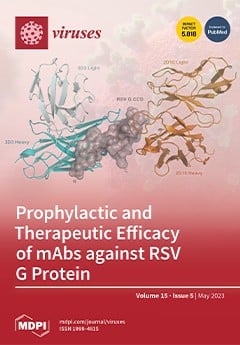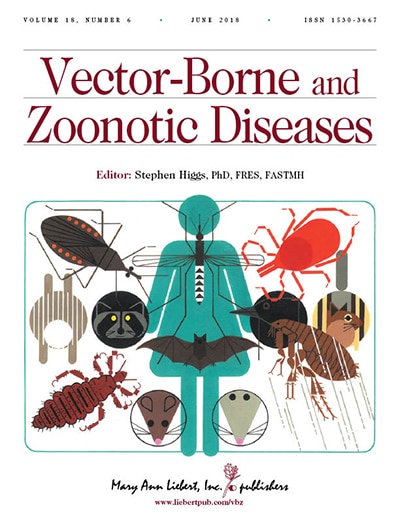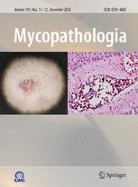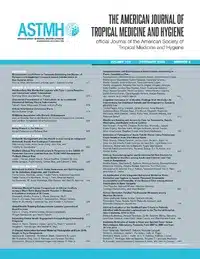
A Serosurvey of Japanese Encephalitis Virus in Monkeys and Humans Living in Proximity in Thailand (2023)
Title : A Serosurvey of Japanese Encephalitis Virus in Monkeys and Humans Living in Proximity in Thailand
Researcher : Divya Lakhotia, Yin May Tun, Nanthanida Mongkol, Oranit Likhit, Sarocha Suthisawat, Suthee Mangmee, Daraka Tongthainan, Wirasak Fungfuang, Phitsanu Tulayakul and Kobporn Boonnak
Abstract : Japanese encephalitis virus (JEV) is a member of the Flaviviridae family and one of Asia’s most common causes of encephalitis. JEV is a zoonotic virus that is transmitted to humans through the bite of infected mosquitoes of the Culex species. While humans are dead-end hosts for the virus, domestic animals such as pigs and birds are amplification hosts. Although JEV naturally infected monkeys have been reported in Asia, the role of non-human primates (NHPs) in the JEV transmission cycle has not been intensively investigated. In this study, we demonstrated neutralizing antibodies against JEV in NHPs (Macaca fascicularis) and humans living in proximity in two provinces located in western and eastern Thailand by using Plaque Reduction Neutralization Test (PRNT). We found a 14.7% and 5.6% seropositive rate in monkeys and 43.7% and 45.2% seropositive rate in humans living in west and east Thailand, respectively. This study observed a higher seropositivity rate in the older age group in humans. The presence of JEV neutralizing antibodies in NHPs that live in proximity to humans shows the occurrence of natural JEV infection, suggesting the endemic transmission of this virus in NHPs. According to the One Health concept, regular serological studies should be conducted especially at the animal–human interface.
Link to article : Viruses 2023, 15(5), 1125. https://doi.org/10.3390/v15051125
Journal : Viruses / in Scopus
Citation : Lakhotia, D., Tun, Y. M., Mongkol, N., Likhit, O., Suthisawat, S., Mangmee, S., Tongthainan, D., Fungfuang, W., Tulayakul, P., & Boonnak, K. (2023). A Serosurvey of Japanese Encephalitis Virus in Monkeys and Humans Living in Proximity in Thailand. Viruses, 15(5), 1125. https://doi.org/10.3390/v15051125
ฐานข้อมูลงานวิจัย มหาวิทยาลัยสยาม : –

Molecular Evidence of Rickettsia in Human and Dog Blood in Bangkok (2018)
Title : Molecular Evidence of Rickettsia in Human and Dog Blood in Bangkok
Researcher : Mongkol, N., Suputtamongkol, Y., Taweethavonsawat, P., Foongladda, S.
Abstract : Rickettsia spp. has been detected in dog fleas in Bangkok, Thailand. With the intent of collecting evidence to confirm the presence of rickettsioses in dogs and to assess the level of associated potential for accidental human infection, human buffy coat from patients with fever of unknown origin (n = 168), whole blood samples from dogs (n = 353), and 19 flea groups from our dog sample population were studied during the 2012 to 2014 study period. The presence of Rickettsia was investigated by molecular detection of 23S rRNA gene of Rickettsia genus, citrate synthase (gltA) gene, and 17-kDa outer membrane gene. All positive samples were confirmed by DNA sequence analysis. Using phylogenetic analysis, three groups of Rickettsia were detected, as follows: Rickettsia felis in 8 patients and 8 dogs; R. felis-like sp. in 2 patients, 5 dogs, and 11 flea samples; and Rickettsia typhi in 3 patients. In addition to confirming the presence of R. felis in Thai patients, the findings of this study suggest that R. felis-like sp. isolated from fleas that were symbiotically coexisting with dogs that we evaluated in this study can transmit and cause disease in dogs and humans in Bangkok.
Link to Academic article: https://doi.org/10.1089/vbz.2017.2180
Journal : Vector-Borne and Zoonotic Diseases, 2018, 18(6).
Bibliography : Mongkol, N., Suputtamongkol, Y., Taweethavonsawat, P., & Foongladda, S. (2018). Molecular Evidence of Rickettsia in Human and Dog Blood in Bangkok. Vector-Borne and Zoonotic Diseases, 18(6), 297–302.

Multi-probe Real-Time PCR Identification of Four Common Candida Species in Blood Culture Broth (2014)
Title : Multi-probe Real-Time PCR Identification of Four Common Candida Species in Blood Culture Broth
Researcher : Foongladda, S., Mongkol, N., Petlum, P., Chayakulkeeree, M.
Abstract : We developed a single-tube real-time polymerase chain reaction (PCR) assay with multiple hybridization probes for detecting Candida albicans, C. tropicalis, C. glabrata, and C. parapsilosis. Primers were designed to amplify 18S rRNA gene of the genus Candida, and DNA probes were designed to hybridize two areas of the amplicons. The amplification curves and specific melting peaks of the probes hybridized with PCR product were used for definite species identifications. The reaction specificity was 100 % when evaluating the assay using DNA samples from 21 isolates of fungal and bacterial species. The assay was further evaluated in 129 fungal blood culture broth samples which were culture positive for fungus. Of the 129 samples, 119 were positively identified as: C. albicans (39), C. tropicalis (30), C. parapsilosis (23), C. glabrata (20), Candida spp. (5), and two samples containing mixed C. glabrata/C. albicans and C. glabrata/C. tropicalis. The five Candida spp. were identified by sequencing analysis as C. krusei, C. dubliniensis, C. aquaetextoris, and two isolates of C. athensensis. Of the ten samples which showed negative PCR results, six were Cryptococcus neoformans, and the others were Trichosporon sp., Rhodotorula sp., Fusarium sp., and Penicillium marneffei. Our findings show that the assay was highly effective in identifying the four medically important Candida species. The results can be available within 3 h after positivity of a blood culture broth sample.
Link to Academic article: DOI: 10.1007/s11046-014-9743-7
Journal : Mycopathologia, 2014, 177(5-6).
Bibliography : Foongladda, S., Mongkol, N., Petlum, P., & Chayakulkeeree, M. (2014). Multi-probe Real-Time PCR Identification of Four Common Candida Species in Blood Culture Broth. Mycopathologia, 177(5-6), 251–261. DOI: 10.1007/s11046-014-9743-7

Seroprevalence of Chikungunya and Zika virus in nonhuman primates: A systematic review and meta-analysis (2022)
Title : Seroprevalence of Chikungunya and Zika virus in nonhuman primates: A systematic review and meta-analysis
Researcher : Mongkol, N., Wang, F.S., Suthisawat, S., …Charoen, P., Boonnak, K.
Abstract : Chikungunya virus (CHIKV) and Zika virus (ZIKV) are mosquito-borne viruses that have caused several outbreaks worldwide. Aedes mosquitoes transmit these viruses mainly through sylvatic and urban transmission cycles. In the sylvatic cycle, nonhuman primates (NHPs) can be infected with CHIKV and ZIKV and may play an essential role as reservoirs for virus transmission. To improve our knowledge on the role of NHPs in the sylvatic cycle, we performed a systematic review and meta-analysis study on the seroprevalence of CHIKV and ZIKV worldwide in NHPs. According to the PRISMA guidelines, 17 CHIKV and 16 ZIKV seroprevalence studies in NHPs from 3 online databases: PubMed, Embase, and Scopus were selected. Data were extracted, including location and study year, type of NHP, sample size, serological tests, and seropositivity. All included studies have high-quality scores, between 5 and 8, corresponding to the grading criteria. Seroprevalence estimation was pooled using the ‘meta’ package in the R statistical software. The estimated pooled seroprevalence of CHIKV and ZIKV in NHP was 17% (95%CI: 5–34, I2: 99%, p < 0.05) and 6% (95% CI: 2–12, I2: 92%, p < 0.05), respectively. Most of the NHPs tested were wild Old World monkeys. The subgroup was analyzed by continents; high seropositive CHIKV and ZIKV were found in African NHPs at 35% (95% CI 9–66.0, I2 = 100) and 16% (95% CI 1–44, I2 = 97), respectively. While NHPs in America have 7% (95% CI 0-28, I2 = 99) and 2% (95% CI 1-3, I2 = 54) against CHIKV and ZIKV. In Asia, 6% (95% CI: 5–34, I2 = 96) CHIKV seroprevalence and 7% (95% CI 0–20, I2 = 98) ZIKV seroprevalence were found in NHP. This study provides a comprehensive overview of the seroprevalence of CHIKV and ZIKV among NHPs in various regions.
Keywords: Chikungunya virus, Zika virus, Seroprevalence, Nonhuman primates, Systematic review, Meta-analysis
Link to Academic article: https://doi.org/10.1016/j.onehlt.2022.100455
Journal : One Health, 2022, 15.
Bibliography : Mongkol, N., Wang, F.S., Suthisawat, S., Likhit, O., Charoen, P., Boonnak, K. (2022). Seroprevalence of Chikungunya and Zika virus in nonhuman primates: A systematic review and meta-analysis. One Health, 15, 100455. https://doi.org/10.1016/j.onehlt.2022.100455

Seroprevalence of Dengue, Zika, and Chikungunya Viruses in Wild Monkeys in Thailand (2020)
Title : Seroprevalence of Dengue, Zika, and Chikungunya Viruses in Wild Monkeys in Thailand
Researcher :Tongthainan, D., Mongkol, N., Jiamsomboon, K., …Tulayakul, P., Boonnak, K.
Abstract : Zoonotic pathogens such as arboviruses have comprised a significant proportion of emerging infectious diseases in humans. The role of wildlife species as reservoirs for arboviruses is poorly understood, especially in endemic areas such as Southeast Asia. This study aims to determine the exposure history of different macaque species from national parks in Thailand to mosquito-borne flaviviruses and alphavirus by testing the serum samples collected from 25
northern pigtailed macaques, 33 stump-tailed macaques, and 4 long-tailed macaques for the presence of antibodies against dengue, Zika, and chikungunya viruses by plaque reduction neutralization assay. Specific neutralizing antibodies against Dengue virus (DENV1-4) and Zika virus (ZIKV) were mainly found in stump-tailed macaques, whereas neutralizing antibody titers were not detected in long-tailed macaques and pigtailed macaques as determined by 90% plaque
reduction neutralization assay (PRNT90). One long-tailed macaque captured from the south of Thailand exhibited antibody titers against chikungunya virus (CHIKV), suggesting enzootic of this virus to nonhuman primates (NHPs) in Thailand. Encroachment of human settlements into the forest has increased the interface that exposes humans to zoonotic pathogens such as arboviruses found in monkeys. Nonhuman primates living in different regions of Thailand showed different patterns of arboviral infections. The presence of neutralizing antibodies among wild monkeys in Thailand strongly suggests the existence of sylvatic cycles for DENV, ZIKV, and CHIKV in Thailand. The transmission of dengue, Zika, and chikungunya viruses among wild macaques may have important public health implications.
Link to Academic article: DOI: https://doi.org/10.4269/ajtmh.20-0057
Journal : American Journal of Tropical Medicine and Hygiene, 2020, 103(3).
Bibliography : Tongthainan, D., Mongkol, N., Jiamsomboon, K., Suthisawat, S., Sanyathitiseree, P., Sukmak, M.,… Boonnak, K. (2020). Seroprevalence of Dengue, Zika, and Chikungunya Viruses in Wild Monkeys in Thailand. American Journal of Tropical Medicine and Hygiene, 103(3), 1228–1233.